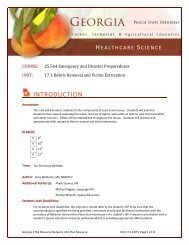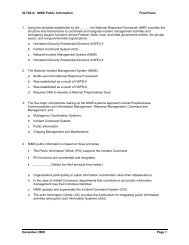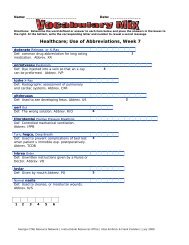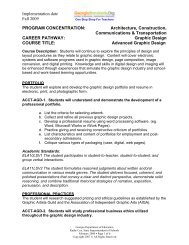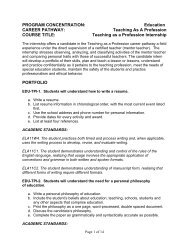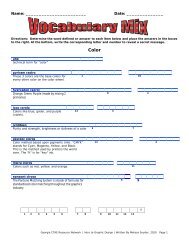emt-basic curriculum module 4
emt-basic curriculum module 4
emt-basic curriculum module 4
Create successful ePaper yourself
Turn your PDF publications into a flip-book with our unique Google optimized e-Paper software.
State of WisconsinEMT-Basic: A Practice BasedApproach to EMS EducationVI.A. Emotionally disturbed patient who consents to care - legal problemsgreatly reducedB. How to handle the patient who resists treatment1. Emotionally disturbed patient will often resist treatment2. May threaten EMT-Basics and others3. To provide care against patient's will, you must show areasonable belief the patient would harm himself or others4. If a threat to self or others, patient may be transported withoutconsent after contacting medical direction5. Usually law enforcement is requiredC. Avoiding unreasonable force1. Reasonable force depends on what force was necessary tokeep patient from injuring himself or others2. Reasonableness is determined by looking at all circumstancesinvolveda) Patients size and strengthb) Type of abnormal behaviorc) Sex of patientd) Mental state of patiente) Method of restraint3. Be aware after a period of combativeness and aggression somecalm patients may cause unexpected and sudden injury to selfand others4. Avoid acts or physical force that may cause injury to the patient5. EMS personnel may use reasonable force to defend against anattack by emotionally disturbed patientsD. Police and medical direction involvement1. Seek medical direction when considering restraining a patient2. Ask for police assistance if during scene size-up the patientappears or acts aggressive or combativeE. Protection against false accusations1. Documentation of abnormal behavior exhibited by the patient isvery important2. Have witnesses in attendance especially during transport, ifpossible3. Accusing EMT-Basics of sexual misconduct is common byemotionally disturbed patients - have help, same sexattendants, and third party witnessesPrinciples for Assessing Behavioral Emergency PatientsA. Identify yourself and let the person know you are there to helpB. Inform him of what you are doingC. Ask questions in a calm, reassuring voiceD. Allow the patient to tell what happened without being judgmentalE. Show you are listening by rephrasing or repeating part of what is saidF. Acknowledge the patient's feelingsG. Assess the patient's mental statusModule 4-86



